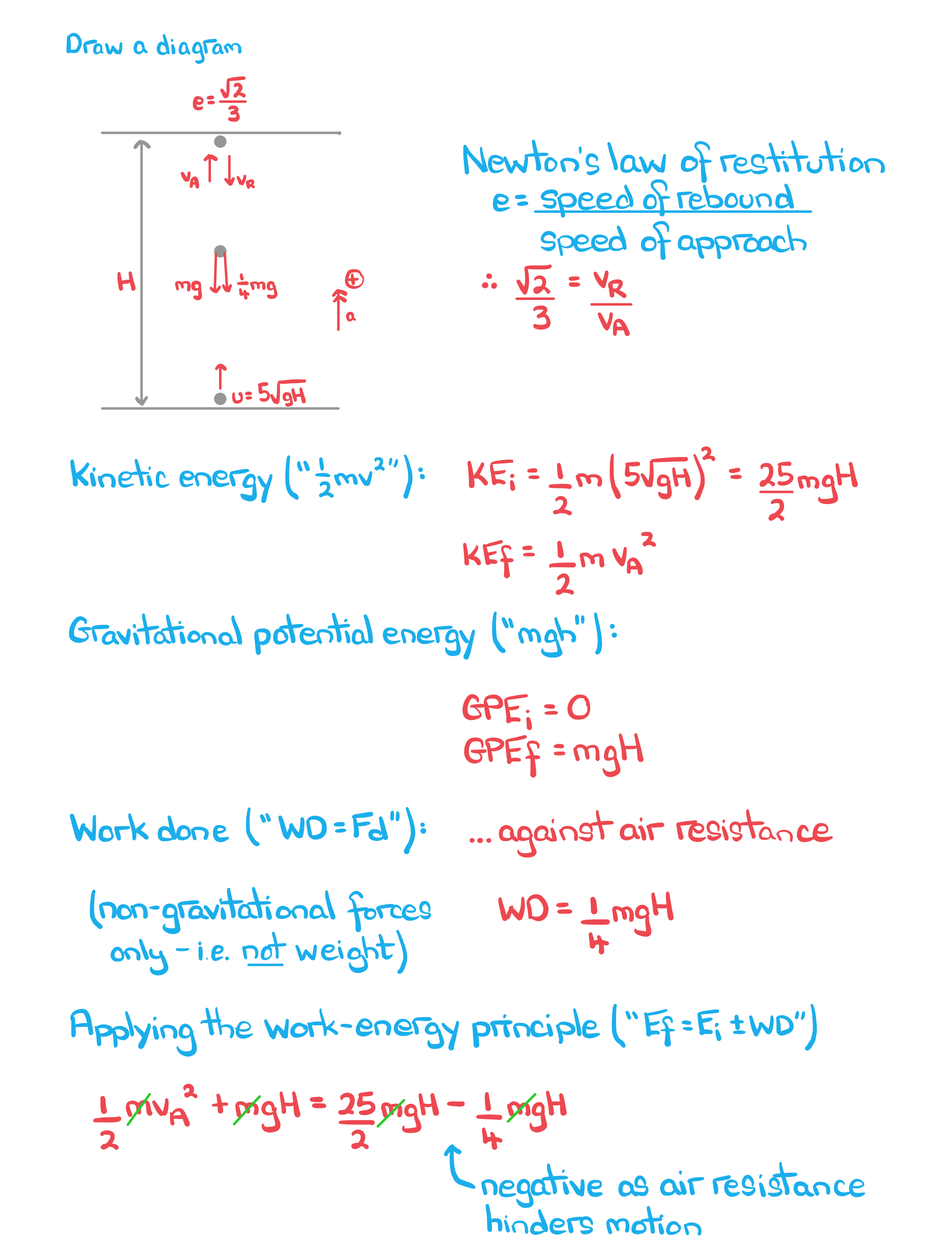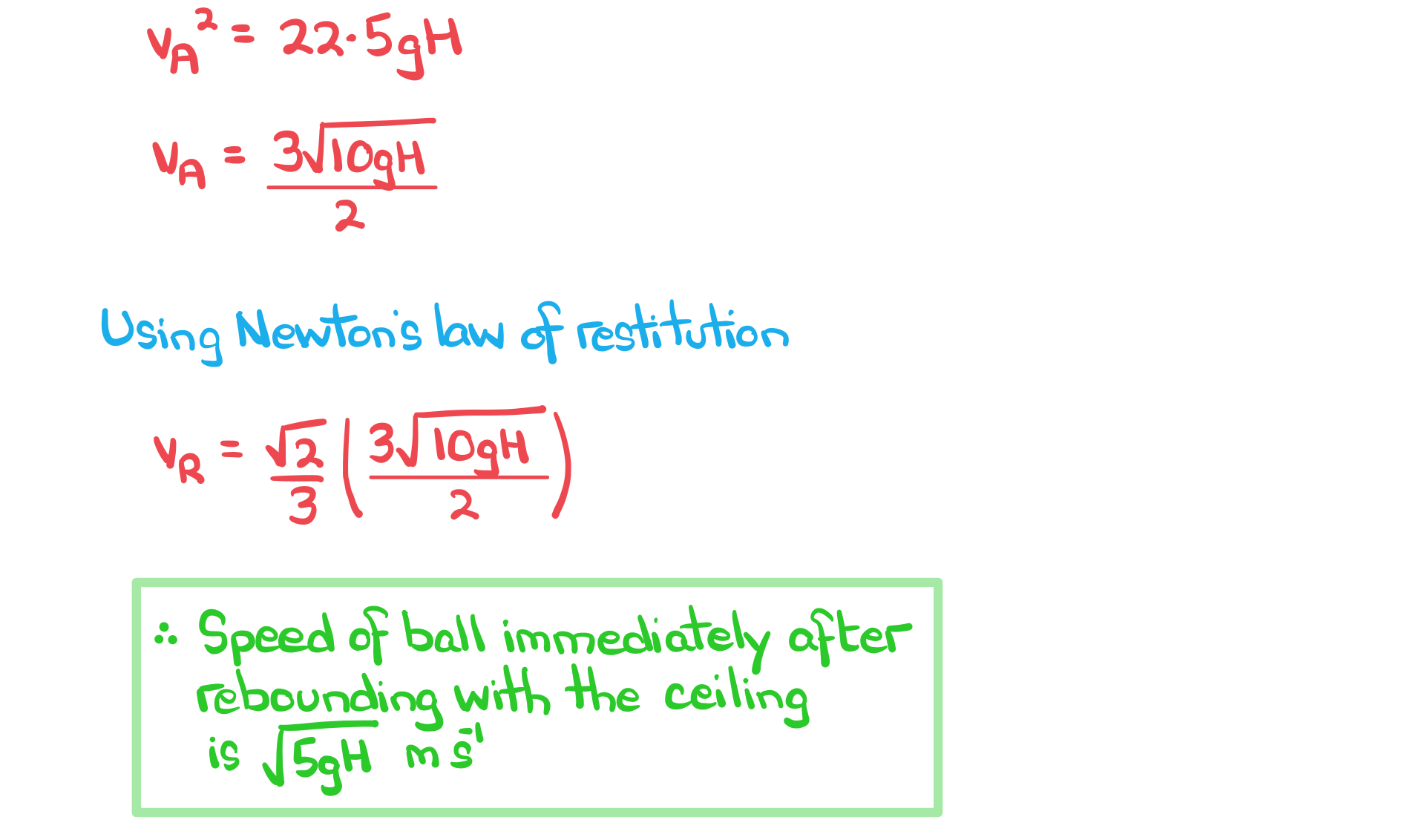Problem Solving with Energy (Edexcel A Level Further Maths): Revision Note
Exam code: 9FM0
Problem solving with energy
How do I include air resistance in the work-energy principle?
The work done by a constant air resistance / drag force,
Newtons, when moving
metres is
Joules
Air resistance hinders (slows down) the particle, so is negative in the work-energy principle
total final energy = total initial energy - work done by air resistance
This can work for particles moving horizontally or vertically
sometimes the air resistance experienced upwards has a different value to that experienced downwards
Air resistances, in reality, are often proportional to the speed (or square of the speed) of the particle
but this makes it a non-constant force
and the work done formula only works for constant forces
How do I use the work-energy principle on curved surfaces?
The work-energy principle can be used in new situations that aren't always inclined planes!
e.g. skateboarding down a curving slope
the skater may put in their own work done (e.g. using their legs) which "helps" to go faster (+ work done)
but there may be a constant resistive force acting against them throughout (- work done)
assume that the resistances are always parallel to the curved slope at any given time (and reactions are always perpendicular)
How do I apply the work-energy principle to connected particles?
You can still use the work-energy principle with connected particles by considering it all as one object
total final energy = total initial energy ± work done
The total energies will be the sum of the GPEs and KEs of all particles
There will be a combination of "work done" terms with + or - depending on whether it's helping or hindering its respective particle
e.g. for a driving car pulling a trailer, the terms look like:
+ WD(by driving force on car) - WD(by tension in towbar on car) - WD(by resistances on car) + WD(by tension from towbar on trailer) - WD(resistances on trailer)
Notice that the work done by the tensions will cancel each other out
How do I apply the work-energy principle to collisions?
Some questions use the work-energy principle and the theory of collisions
There may be a particle projected into a perpendicular wall
Use the Work-Energy Principle to find the speed with which it impacts the wall
You can find the speed by making the kinetic energy the subject
This gives the speed of impact
To find the speed of rebound, calculate "e" × the speed of impact
"e" is the coefficient of restitution
Other questions may have two spheres colliding on a horizontal table, then one falling off
Use conservation of momentum and Newton's law of restitution to find velocities after the collision
When the sphere rolls off the table, it becomes a projectile (projected horizontally with it's new velocity)
If you know the height of the table, you can use the Work-Energy Principle to find the speed of impact with the ground
Examiner Tips and Tricks
It is common for harder energy questions to be fully algebraic
look out for masses,
, cancelling in the working
Worked Example
A particle of mass kg is projected vertically upwards from ground level at a speed of
ms-1, where
is the vertical height in metres between the ground and the ceiling. The particle is subjected to a constant air resistance force of
N, opposing its motion. The coefficient of restitution between the particle and the ceiling is
.
Find, in terms of and
, the exact speed of the ball immediately after rebounding with the ceiling.



Unlock more, it's free!
Did this page help you?